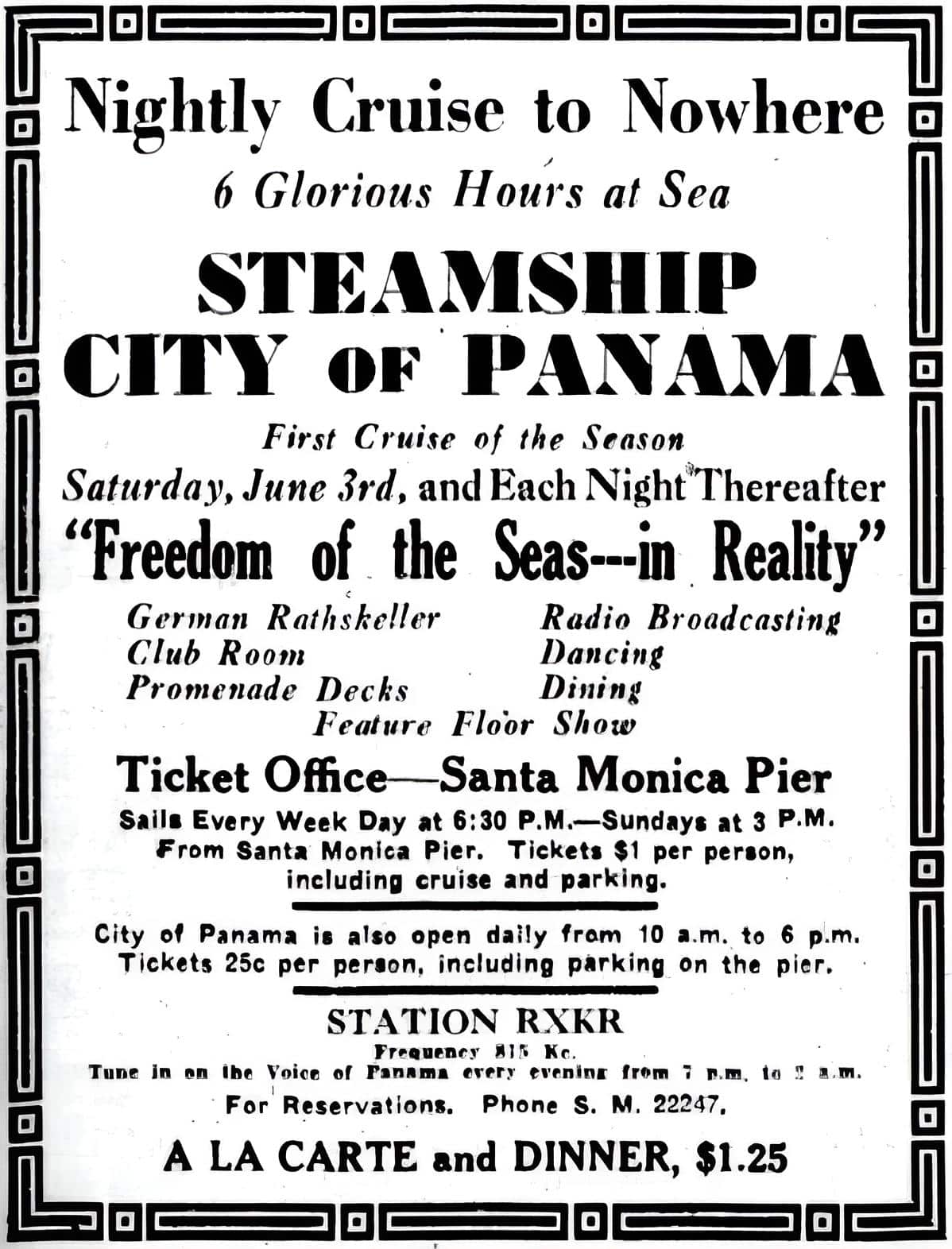Ship details: In 1933 the former British navy vessel HMS Mistletoe was baptized “La Playa” and later renamed “City of Panama” by its new owner George A. McLoney. The ship was registered in Panama and was intended as a floating showboat to display the glories of touristry in Panama to the Californians. But instead, the owners left the ship as it was before the new registry – a floating speakeasy and casino. Therefore Panama withdraw the registration in June 1933 so that the ship could be towed into a Los Angeles harbour two months later. [Information by Andrew Yoder]
The ‘Star of Scotland’ went through many names including the ‘HMS Mistletoe’ as a Royal Navy warship. The ‘Chiapas’ served as a cargo carrier from Panama to San Francisco. The ‘La Playa de Ensenada’ hauled fruit from Mexico to the U.S. West Coast. Once she made it to the Santa Monica Bay she had four other names before becoming the ‘Star of Scotland’. Her simple job in the Bay was first as a speakeasy and gambling ship, later adding prostitution to her list. In 1940 with the new name Star of Scotland she became a party boat and fishing barge.
On a particularly stormy few days in January 1942, the ship began taking on water that the crew could not handle. According to eyewitness account, something seemed to give way and the ship went down in seconds. Sadly, one crewmember lost his life that night.
The Star of Scotland, originally commissioned in 1918 as the HMS Mistletoe, lies about two miles from shore off Santa Monica in the northern section of the Santa Monica Bay. Marked on most charts. GPS N 33°59.88’&Mac226; W 118°31.20′ (GPS for reference only. Do not use as your sole source of navigation). [Information by Kim Sheckler]

Offshore radio station: RXKR from May till August 1933.
Although both the station and the ship were licensed in Panama, neither followed the stipulations contained in the legal contracts. The City of Panama was supposed to be a floating showboat to display the glories of tourism in Panama to Californians. Instead, the owners of the ship left it as it was before the new registry: a floating speakeasy and casino. (…) The station was licensed on 815 kHz with 500 to 1000 watts under the RXKR callsign with experimental, noncommercial programming. Instead, it pumped out a beefy 5000 watts of popular music and commercials. (…) The pirate ship was heard as far away as the East Coast, Hawaii, and northeast Canada, with fair signals. [Taken from: Andrew Yoder: “Pirate Radio Stations”, McGraw-Hill 2002]

Among the biggest of the ships were the City of Panama, which broadcast its own station on 815kHz AM, and a ship called Rex. They were run by mobster Tony Cornero and financed by Bugsy Siegal, a legendary underworld figure at the time. They spent over $1m US to equip and float their ships, whose radio signals could be heard all along the western seaboard of the USA, attracting business to the ship. With a staff of 300 it could hold over 2000 customers, so clearly the offshore gambling boats were a big business. Without the radio stations on board them, it’s doubtful they could have attracted enough business.”
After requests by the US State Department, Panama withdraw the City of Panama’s registry, and RXKR lost its license. In August 1933, the City of Panma was finally towed into a Los Angeles harbour.
Location: International waters off the Californian coast


